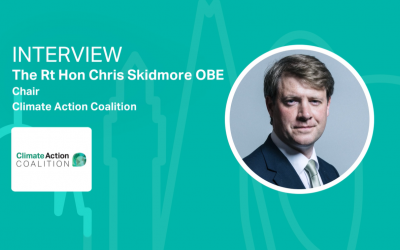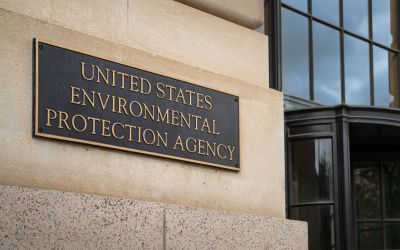Emilie Mazzacurati on the growing demands for ESG, climate data and analytics
Emilie Mazzacurati, Global Head of Moody’s Climate Solutions, talks to Climate Action about the growing demands for ESG, climate data and analytics and how regulatory pressures are mounting for the financial institutions to integrate climate risk into risk management.

Emilie Mazzacurati, Global Head of Moody’s Climate Solutions, talks to Climate Action about the growing demands for ESG, climate data and analytics and how regulatory pressures are mounting for the financial institutions to integrate climate risk into risk management.
Can you tell me more about Moody’s ESG Solutions Group (MESG) and the impact of the growing demand for ESG, climate data and analytics?
Moody’s ESG Solutions Group is a business unit of Moody’s Corporation serving the growing global demand for ESG and climate insights. The group is powered by Moody’s affiliates Four Twenty Seven and V.E, and leverages Moody’s data and expertise across ESG, climate risk, and sustainable finance. It aligns with Moody's Investors Service (MIS) and Moody's Analytics (MA) to deliver a comprehensive, integrated suite of ESG and climate risk solutions including ESG scores, analytics, Sustainability Ratings and Sustainable Finance Reviewer/certifier services. Increasing shareholder pressure on ESG and climate risk, growing regulatory requirements to assess and disclose these risks, and increasingly frequent and costly climate events like wildfires and storms are driving the growing demand for ESG and climate data that will inform sustainable finance and investments in resilience.
How difficult is it for investors, financial institutions and organizations to effectively measure their climate exposures and meet evolving disclosure requirements?
Climate risk assessment and disclosure presents several distinct challenges, although significant progress has been made in recent years. Firstly, understanding climate risk requires a forward-looking assessment that considers changing conditions and uncertainty due to climate change. This also requires leveraging climate science, which can present challenges in terms of timescales and granularity. Secondly, climate risk assessment relies on access to counterparties’ geolocations, which banks and investors do not necessarily have. While assets such as mortgages are easy to put on a map because the loan is associated with a specific address, investors and lenders do not consistently know the underlying location of other assets in their portfolios. Lastly, translating climate measures into metrics on financial and credit risk is the critical next step to informing meaningful climate risk management. This is a topic of much research, and significant new developments have been made. In this vein, Moody’s recently launched a climate-adjusted probability of default (PD) model for listed and unlisted companies.
How will the integration of climate risk into the regulatory and supervisory agenda affect risk management practices in the financial sector?
Regulatory pressures are mounting on banks, insurers and investors as central banks and financial supervisors work to integrate climate risk into risk management, disclosures and capital requirements. Pilot stress tests are underway in several jurisdictions, including Canada and Hong Kong, and the European Central Bank recently released the findings from its preliminary stress test for the largest banks in Europe, leveraging climate data from Four Twenty Seven, part of Moody’s ESG Solutions Group. Large banks around the world are working to get equipped with the right data, analytics and models to best identify and quantify climate risk. Climate risk is now being discussed at the board level and the most forward-thinking banks are rolling out programs to embed green lending and climate risk practices throughout their workforce. Most banks are in exploratory mode, as are regulators, to make sure requirements can be supported by climate science, and to test new approaches and evaluate what is required to support the transition to a zero-carbon economy and investments in adaptation and resilience.
Are corporate net zero commitments alone enough to move the world towards a 1.5 degree trajectory?
Commitments are a good starting point, but alone are not enough – actions will move the world in the right direction. For many companies, commitments signal good intention but are yet to be supported by specifics as to how they will be achieved. Signals are important, however, as they will help drive investments in research and technology that will help reduce emissions and generate a virtuous circle for clean tech. But companies also need to plan based on current technology, and accept that the way we use energy and power our economy will need to change fundamentally.
Net zero commitments also leave aside other major environmental pressures. The unsustainable consumption of natural resources, water scarcity, biodiversity loss and ecosystem collapse need to be addressed in the same breath, so we can protect our planet and our ability to thrive as societies.
Moody's is an Industry Partner at the Sustainable Investment Forum Europe in April, bringing together asset owners and managers, ratings agencies, banks, UN and Government policymakers, investors, development banks, think tanks, and NGOs committed to driving forward the sustainable finance agenda. Register your place for free here.






